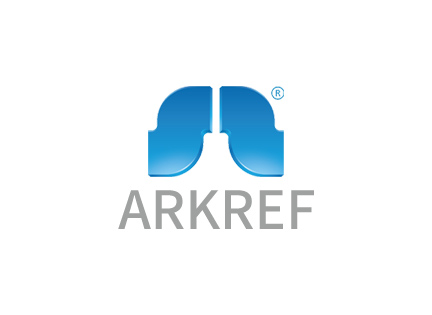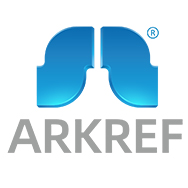What makes a cold room so important for storage?
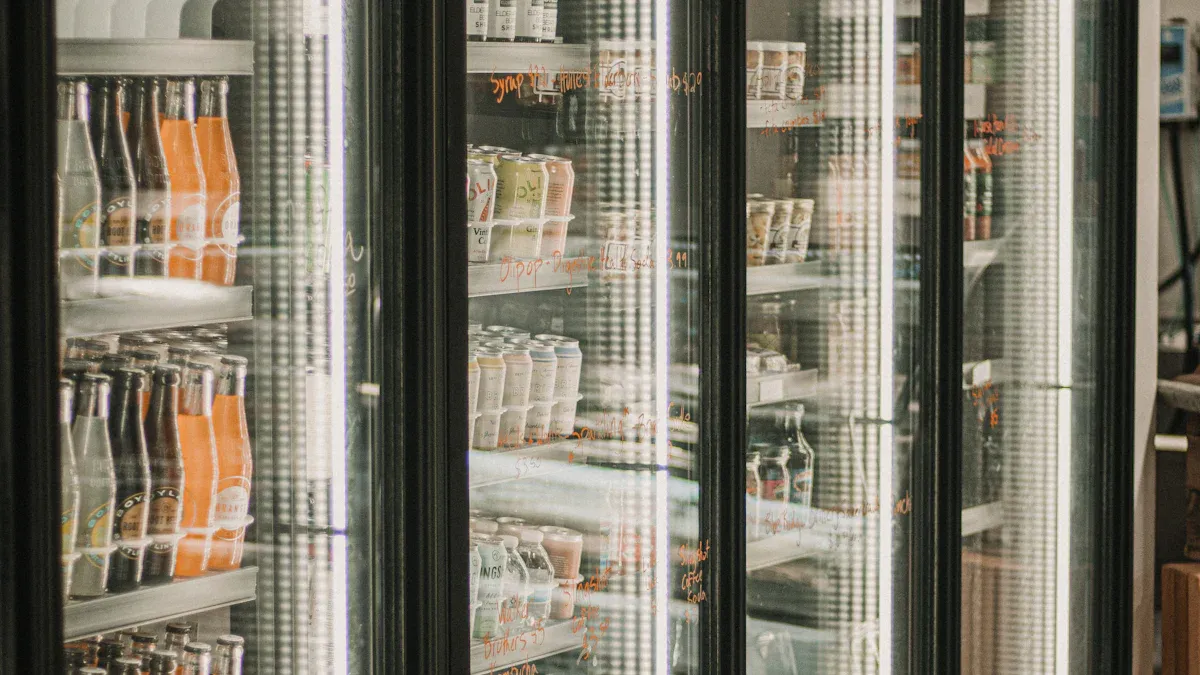
A cold room is a special place that keeps things cold. It helps slow down spoilage and keeps things fresh. You use a temperature-controlled room to protect items that can go bad. These items include food, medicine, and cosmetics. Heat and bacteria can ruin these items. Many businesses need cold rooms to keep products safe. Cold rooms also help keep products high-quality.
Industry | Application Description | Market Share Insights |
|---|---|---|
Food and Beverage | Keeps perishable goods fresh and safe. It helps food last longer. | This industry uses the most cold rooms. People want fresh food and snacks. |
Pharmaceutical | Stores vaccines and medicines at the right temperature. | This area is growing because of health needs and more vaccines. |
Cosmetic | Keeps creams and serums good for longer. | More people want organic products, so this area is growing. |
Cold storage markets are growing very fast. Experts think there will be a 5.5% growth rate each year from 2025 to 2032 for temperature-controlled collectors. Cold chain monitoring could be worth $13.7 billion by 2029. This area could grow by 17.4% each year. Why do so many companies use cold rooms for safe storage? Let’s find out.
Key Takeaways
Cold rooms help slow down food spoilage. They keep food, medicine, and other items fresh. This helps stop waste and keeps things good to use.
Keeping the temperature below 40°F (4°C) is very important. This stops bad bacteria from growing. Always check your cold room’s temperature to stay safe.
Good insulation and energy-saving systems can save you money. They also help the planet and keep your products safe.
Cold rooms are needed in many industries. These include food, medicine, and cosmetics. They help keep things good and make them last longer.
New technology like IoT monitoring and smart refrigeration helps cold rooms work better. It also keeps products safe from going bad.
Cold room basics
Definition
A cold room is a place that stays cold all the time. It helps stop things from going bad or losing quality. If things get too warm, they can spoil. In healthcare, a walk-in cold room keeps vaccines and medicines safe. Medical supplies also stay safe in these rooms. Grocery stores and restaurants use cold rooms too. Laboratories need them for some products. Cold rooms help food and drinks last longer.
A cold room keeps the temperature the same.
It stops bacteria and mold from growing fast.
You can put many perishable goods inside.
Main features
A cold room is different from a regular storage room. It has special things that help keep products safe and fresh.
Feature | Cold Storage | Regular Warehouse |
|---|---|---|
Temperature control | Yes | No |
Energy cost | High | Low |
Product types | Perishable & temperature-sensitive | Non-perishable |
Monitoring | Automated, real-time | Basic or manual |
Shelf life impact | Preserves quality | No effect |
You will see that a cold room:
Keeps the right temperature for each product.
Makes sure the whole room is the same temperature.
Uses strong compressors and coolants that are better for the planet.
Has ways to stop ice from forming.
Has backup power so it works during blackouts.
Tip: Pick a cold room with good insulation and steady temperature control if you want your products to stay safe and fresh.
How a cold room works
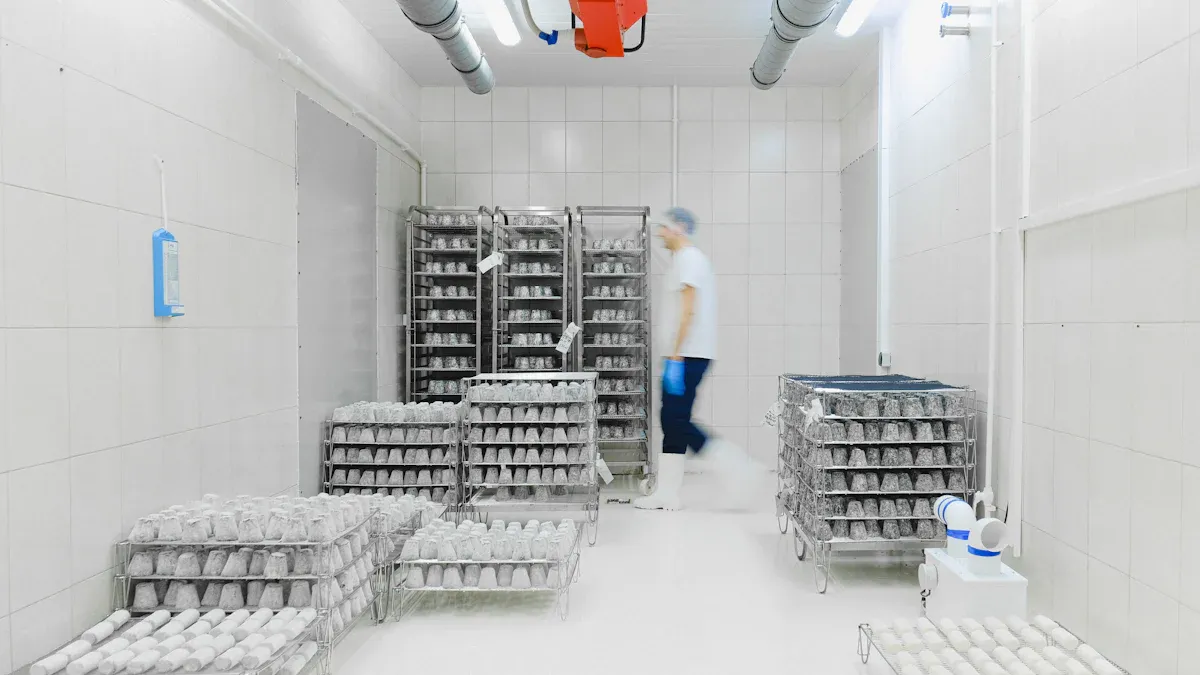
Cooling system
A cold room needs a strong cooling system. The compressor starts the cooling process. It pushes refrigerant through pipes and makes it high pressure. The condenser takes heat from the refrigerant and sends it outside. The receiver holds the refrigerant and keeps it clean. The thermostatic expansion valve controls how much refrigerant goes to the evaporator. The evaporator takes heat from the room and makes the air cold. Insulation panels keep cold air inside and block warm air.
Tip: Good insulation helps save energy and keeps products safe.
Key components
Every part of a cold room has a job. They work together to keep things cold.
| Component | Role in Temperature Regulation | | Compressor | Moves refrigerant and raises its pressure. | | Forced Air-Cooled Condenser | Takes heat from refrigerant and sends it out. | | Receiver & Filter Drier | Stores and cleans refrigerant, keeps it dry. | | TXV (Thermostatic Expansion Valve) | Controls refrigerant flow to the evaporator. | | Evaporator | Takes heat from the room, cools to -23 °C. | | Suction Accumulator | Keeps compressor safe from liquid damage. | | Temperature Controller & Thermistors | Keep temperature steady and correct. |
Cold rooms use technology to watch and control temperature. Sensors, thermostats, and control systems help keep things safe.
Temperature control
A cold room must stay at the right temperature. Modern systems use many tools for this. Sensors check the temperature all the time. Thermostats watch levels and send alerts if needed. Fans move air so every spot stays cold. Insulation keeps cold air inside. Control systems and PLCs use sensor data to change cooling. User interfaces let you set temperature and see reports. Some systems let you control the cold room from far away.
| Technology Component | Function | | Refrigeration Units | Cool the cold room. | | Thermostats | Watch temperature all the time. | | Sensors | Give real-time temperature data. | | Fans | Move air to stop hot or cold spots. | | Insulation Materials | Save energy and keep cold air in. | | Control Systems | Use sensor data to change equipment. | | Programmable Logic Controllers (PLCs) | Automate temperature changes. | | User Interfaces | Let people set and watch conditions. | | Connectivity Options | Allow remote control and data logs. | | Data Analytics and IoT | Show usage and help with repairs. |
Temperature monitoring in cold rooms is very exact. Most systems keep temperature within ±1.8°F (±1.0°C). This protects products and stops spoilage.
Running a cold room can be hard. Common problems are:
Broken hardware like compressors can make the temperature wrong and risk samples.
Bad sensors can mess up cold room checks.
Power loss stops cooling and changes temperature.
Cybersecurity risks mean someone could break in and change settings or steal data.
Costs for buying, energy, and fixing can make cold rooms expensive.
With the right tools and technology, your cold room can work well and keep products safe.
Why cold rooms matter for storage
Preservation
You want your products to last longer. A cold room helps slow spoilage and keeps things fresh. Controlled environments protect food, medicine, and other perishables from heat and bacteria. Studies show cold chain rooms keep the best temperature and humidity. This helps products last longer and cuts down on waste. Cold rooms slow bacteria and enzyme activity. This stops spoilage and keeps food healthy.
Evidence Description | Impact on Preservation |
|---|---|
Products last longer and less gets wasted. | |
Slows bacteria and enzyme activity. | Stops spoilage and keeps food healthy. |
Controlled temperatures keep food healthy. | Food stays good for you. |
Stops harmful bacteria from growing. | Less chance of sickness and safer food. |
A small organic farm once lost 25% of its berries to spoilage. After getting refrigerated storage, spoilage dropped below 5%. The farm sold more berries and had a longer selling season. Cold rooms help cut waste in big ways.
Safety
You need to keep products safe from bad bacteria. Cold rooms do this by keeping things cold. Bacteria grow fast between 40°F and 140°F (4°C to 60°C). Storing food below 40°F (4°C) slows bacteria. This keeps food and medicine safer for everyone.
Temperature Range | Bacterial Growth Risk |
|---|---|
Below 40°F (4°C) | Low risk of growth |
40°F - 140°F (4°C - 60°C) | High risk of growth |
Above 140°F (60°C) | Low risk of growth |
Bacteria grow most between 40°F and 140°F (4°C to 60°C).
Keeping food out of this range lowers sickness risk.
Tip: Always check your cold room’s temperature. This helps keep products and customers safe.
Efficiency
You want your business to work well and save money. Cold rooms help with both. Better insulation, refrigeration, and automation make cold rooms use less energy. This saves money and helps meet safety rules. Cold rooms also help stop food waste. One third of food is lost because of bad storage. Cold rooms help fix this and support food security.
Cold rooms help stop food waste, which is one third of all food lost because of bad storage.
They use less energy and lower pollution, helping the planet.
The cold chain industry is changing to give safer, greener food.
Cold rooms help the planet too. Refrigeration stops food waste during shipping, which lowers pollution. The industry now works to save energy, which helps use more clean power.
Cold rooms also make moving goods easier. You can store and ship things like vaccines, fresh food, and frozen items better. Automation helps control temperature and lowers spoilage. This means customers get better products, faster, and with less waste.
Products stored in cool rooms
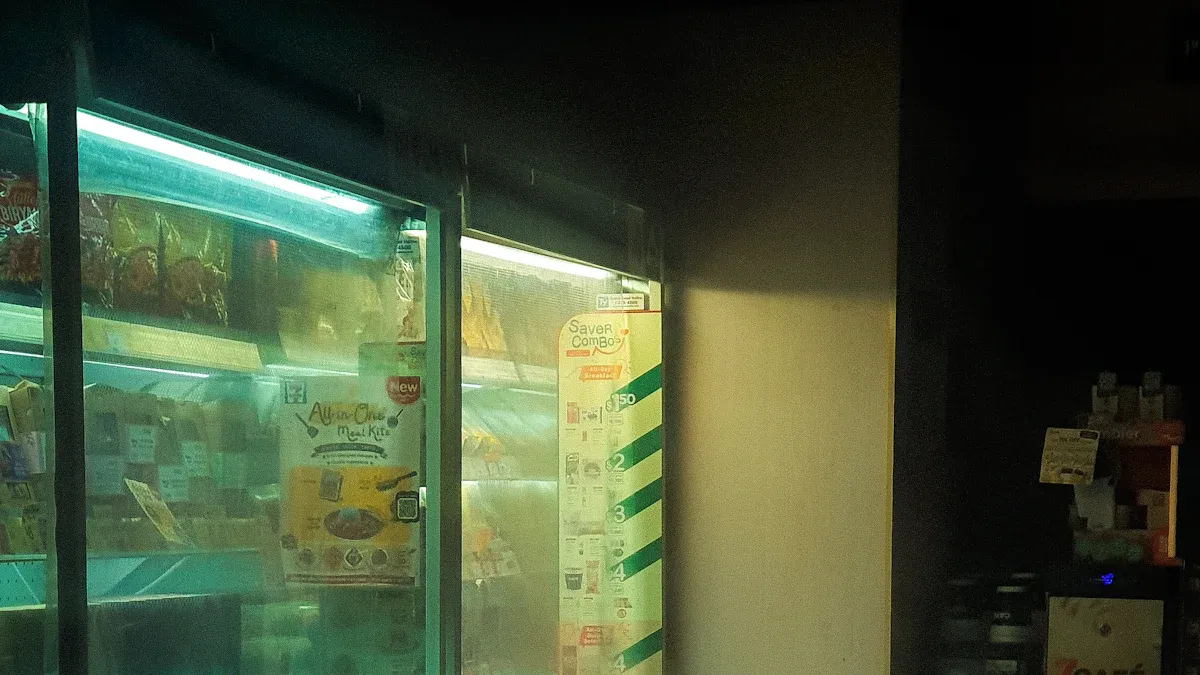
Food
A cool room helps keep food fresh and safe. Fruits, vegetables, dairy, and meat need the right temperature to last longer. When you put food in a cool room, it does not spoil as fast. The taste stays strong. Grocery stores, restaurants, and farms use cool rooms every day. Cheese, yogurt, and eggs stay good in a cool room. Seafood and frozen meals also need cool rooms. Using cool rooms helps stop food from being wasted.
Fruits stay crisp and vegetables stay crunchy.
Meat is safe from bacteria and mold.
Dairy products stay creamy and safe to eat.
Tip: Always check the cool room’s temperature to keep food at its best.
Pharmaceuticals
Cool rooms protect medicines and vaccines. Many medicines need the right temperature to work well. If you store vaccines or biologics too warm or cold, they do not work right. You must follow strict rules for storing these items in a cool room.
Product Type | |
|---|---|
2°C to 8°C | Vaccines and biologics |
-20°C to -40°C | Certain vaccines and hormones |
-40°C to -80°C | Cell samples and advanced biologics |
-80°C to -196°C | Cryopreserved samples |
Ambient-controlled | Some clinical trial materials |
You need to follow rules from groups like the US FDA and EMA. These rules help keep medicines safe in cool rooms.
Stability studies must follow rules from groups like the EMA, ICH, and US FDA.
Stability testing checks if products work well, how long they last, and if they meet the rules.
The ICH and WHO set climate zones to help with testing, so products are safe in different places.
Note: Storing medicines in the right cool room helps save lives.
Other goods
Cool rooms store more than food and medicine. Flowers, cosmetics, and art supplies also need the right temperature. Flowers stay bright and fresh in a cool room. Creams and serums do not melt or spoil. Some electronics and chemicals need cool rooms to stay safe. Artists and labs use cool rooms for paints and samples.
Flowers stay pretty for longer.
Sensitive products are safe from heat and moisture.
Cool rooms help many industries store their goods.
Callout: Cool rooms and controlled environments help products stay high-quality.
Without proper cold storage
Risks
If you do not use cold storage, your products are in danger. You need a controlled place to keep food, medicine, and other things safe. If you leave food open or store it at the wrong temperature, many things can go wrong. Food can lose its color and taste because of oxidation. Air and water can get in and help bacteria grow. This can spoil your food. Bacteria from the air or raw foods can land on open food. This causes cross-contamination. When the temperature changes, small water drops can form. This is called micro-condensation. Mold and spoilage organisms can grow because of this.
Controlled environments help stop these problems. They keep the temperature steady and protect your products from germs.
Note: Always check your storage area for the right temperature and humidity. This helps you stop spoilage and keeps your products safe.
Consequences
If you do not use controlled environments, bad things can happen. Your business can lose money. Customers may stop trusting your products. Microbial spoilage can change how food tastes and feels. People may smell something bad or see slimy food. They will not want to buy your products. One food safety problem can hurt your brand. You might lose money and have to recall products. Recalls cost a lot. You may need to pay for ads, warnings, or even lawsuits. If you do not handle recalls well, your company can lose its good name. You could lose certifications or even go out of business. Studies show about 60% of companies keep customer trust if they are honest and take action during recalls.
You need controlled environments to protect your business and your customers. Good storage keeps products safe, saves money, and helps your brand stay strong.
You use cold rooms to keep food and medicine safe. Cold rooms also protect other goods from going bad. These rooms help you waste less and keep things high quality. Some cold rooms use solar power. This helps store food and vaccines even when power is not steady. As technology gets better, more people want cold storage. New ideas are changing how we store things:
Description | |
|---|---|
Smart Refrigeration Systems | AI sets the temperature and saves energy. |
IoT Monitoring | Tracks products in real time to keep them safe. |
Predictive Maintenance | AI finds problems before they happen. |
Automation & Robotics | Robots move items fast and safely. |
Sustainable Technologies | Green systems help protect the earth. |
Cold rooms help keep your products fresh now. They will keep them even safer in the future.
FAQ
What is the main purpose of a cold room?
You use a cold room to keep products fresh and safe. It helps slow down spoilage. You protect food, medicine, and other items from heat and bacteria.
How does a cold room differ from a regular fridge?
You store larger amounts of goods in a cold room. It keeps the temperature steady for many products. You use it for business, not just for home use.
Why do you need a cold storage facility?
You need a cold storage facility to keep perishable goods safe. It helps you meet safety rules. You can store food, medicine, and other sensitive items for longer periods.
What happens if you do not use cold storage?
You risk spoilage and waste. Products can lose quality and become unsafe. You may lose money and customer trust.
Can you control the temperature in a cold room?
You set and monitor the temperature using sensors and controls. You keep products at the best temperature for safety and quality.
See Also
The Importance of Cold Rooms for Food Safety
Cold Rooms: Essential for Maintaining Product Freshness
Cold Storage Solutions to Safeguard Food Quality
